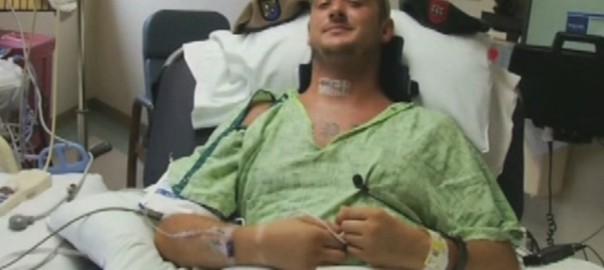Paralyzed Man Can Eat Again After Regrowing Esophagus

In a big step forward for regenerative medicine, a 24-year-old man who lost most of his esophagus to an aggressive infection following a car wreck has grown a replacement. Although paralyzed from the neck down, the man is now able to swallow and eat normally and maintain his weight after many years of struggling with a severely damaged esophagus.
Scientists have been experimenting with ways to replace damaged and diseased limbs and organs with the help of regenerative medicine, but this life-saving procedure was the first one successfully used in a human patient. All other options had been exhausted.
To reconstruct the esophagus, a team of doctors at the Medical College of Wisconsin in Milwaukee, led by Professor Kulwinder Dua, used an FDA-approved stent (wire mesh tube routinely used to keep clogged arteries open) and combined it with a commercially available extracellular tissue matrix (used for tissue and organ repair and regeneration). This scaffold was then sprayed with platelets obtained from the patient himself to provide a cocktail of growth factors that would jump-start the healing process. The idea was to grow a new esophagus that would be composed partially of external materials and partially of the patient’s own tissues.
Things did not go smoothly at first. The stent became clogged with a disorganized growth of tissue and had to be removed a few years later when the patient started having trouble with swallowing. But the esophagus then went on to heal beautifully. Seven years following reconstruction and four years after stent removal, the patient is eating a normal diet and has no problems swallowing.
With cancer of the esophagus increasing worldwide, this technique has a potentially more extensive application. Currently, malignant esophageal pathology is treated with radical surgery to remove the esophagus, a procedure that is invariably associated with a severely compromised quality of life and high morbidity and mortality.
Regenerative medicine procedures such as this use biological and synthetic scaffolds to remodel and regrow functional tissue. For patients with patch defects and anastomoses (surgical connections) in the esophagus, extracellular matrix (ECM) has successfully been used to reinforce repairs and prevent the formation of strictures (narrowing). These ECM scaffolds are able to completely restore normal function and maintain a disease-free esophagus after removal of cancer. What the regenerative medicine approach to biomaterial-mediated esophageal repair will enable is a more aggressive removal of cancerous tissue without the need for radical surgery and its associated complications. While the procedure is far from becoming a routine operation, this initial success is encouraging.
References:
https://www.sciencedaily.com/releases/2016/04/160409091725.htm


